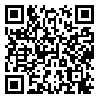Volume 13, Issue 3 (12-2022)
2022, 13(3): 77-90 |
Back to browse issues page
Department of Horticultural Science, Faculty of Agriculture, University of Mohaghegh Ardabili, Ardabil, Iran.
Abstract: (580 Views)
Chromium (Cr+6) is one of the heavy metals that can disrupt various physiological processes in plants. One of the strategies to moderate the heavy metals stress is the symbiosis of plant roots with symbiotic fungi. Therefore, in order to investigate the effect of chromium and symbiotic fungus on the growth and physiological characteristics of red lettuce (Lactuca sativa L. cv. Little Gem), a factorial experiment was carried out as factorial based on completely randomized design in four replications as a hydroponic culture. The experimental treatments included chromium in three levels of 0 3 and 15 mg L-1, and symbiotic fungi in four levels of control, Rhizophagus irregularis, Serendipita indica and R. irregularis + S. indica. The results showed that by increasing the concentration of Cr in the nutrient solution, leaf and root fresh weights, total chlorophyll, root length, nitrogen, phosphorus and potassium decreased significantly. But increasing the concentration of chromium in the nutrient solution increased the content of leaf Cr, anthocyanine, soluble carbohydrates and malondialdehyde increased. The symbiotic relation of S. indica and R. irregularis with Cr-stressed plants showed a significant increase in root colonization percentage, total chlorophyll content, nitrogen, phosphorus and potassium compared with the plants grown under Cr treatment alone and without symbiotic fungi. The findings showed that the symbiosis of S. indica and R. irregularis fungi with lettuce under the Cr stress conditions led to the improvement of growth and physiological traits, reduced the content of leaf chromium and moderated the chromium toxicity.
Type of Study: Applicable |
Subject:
Plant growth promoting microrganisms in the rhizosphere
Received: 2022/07/16 | Accepted: 2022/12/1 | Published: 2022/12/1
Received: 2022/07/16 | Accepted: 2022/12/1 | Published: 2022/12/1
Send email to the article author
| Rights and permissions | |
 |
This work is licensed under a Creative Commons Attribution-NonCommercial 4.0 International License. |







